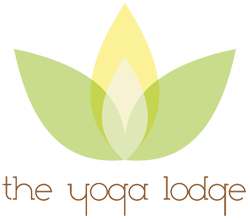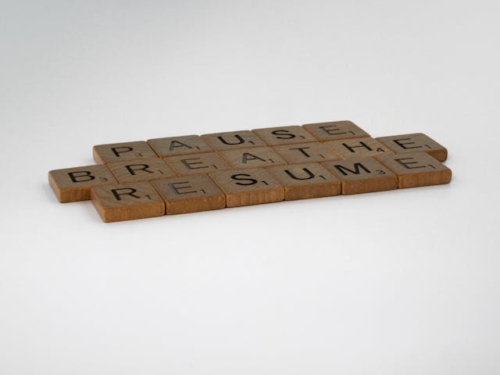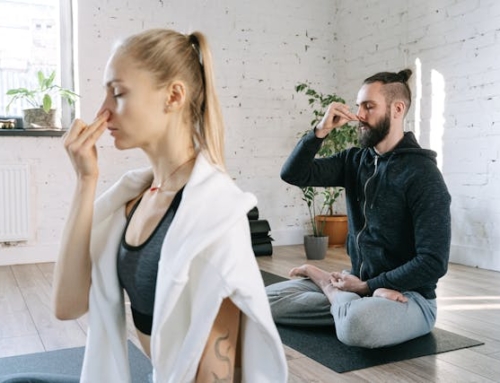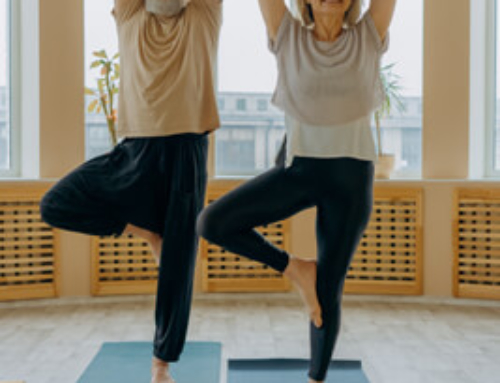The Healing Power Of The Breath

Welcome to my Blog on The Healing Power Of The Breath. An article written by Celeste McGovern for What The Doctors Don’t Tell You. Celeste looks at the top ways to fix your breathing for better health.
We do it 25,000 times or so per day but rarely give it a passing thought. The life-sustaining work of inhaling and exhaling, infusing every cell of our body with oxygen and expelling carbon dioxide, happens automatically for us, usually a dozen times a minute or more without a single conscious effort on our part.
Like circulating blood, breathing is effortless. It’s the most basic bodily function—if you’re not breathing at all, you’re dead. Yet there is a growing awareness that most of us are doing it all wrong.
“The vast majority of us are breathing dysfunctionally,” says James Nestor, journalist and bestselling author of Breath: The New Science of a Lost Art (Riverhead Books, 2020). “I know that sounds crazy, but then you look at the science.”
Since the dawn of industrialization, research shows, human jaws have been shrinking—mostly due to insufficient chewing on a diet of soft industrialized foods—and consequently our nasal passages have narrowed, too. As a result, compared to our ancestors, most of us are compensating by breathing too much air, too fast and too shallow, and through our mouths rather than through our withered nasal passages.
Add other features of modern living to the picture, and it gets worse. Our necks are bent over blue light screens. Our mouths often hang open.
“We spend 90 percent of our time indoors now, and most of that time is spent sitting in a way that is not conducive to healthy breathing,” says Nestor. “You add to that pollution, allergens, very tight clothes that aren’t conducive to healthy breathing, and you’ve got this perfect storm for respiratory disaster, which is what has happened to this planet right now.”
The problem is exacerbated by our low tolerance for stress, too, says Nestor. Our ancestors faced almost constant threats to their survival, from starvation to frigid temperatures and other menaces of nature, but industrialized life is relatively easy going. Despite that, we generally don’t handle stress well.
Breathing dysfunction and high reactions feedback to each other in a negative loop, says Nestor, and they’re not benign. We can survive a long time puffing on shallow breaths, but it impacts our health.
“The majority of diseases we suffer from are diseases of civilization,” Nestor told WDDTY. “You can eat the right foods, exercise every day, and sleep eight hours, but if you’re not breathing right, you are not healthy.”
Poor breathing is contributing to the soaring rates of sleep apnea, chronic nasal obstruction, anxiety, asthma, panic attacks, depression, headaches, hypertension and autoimmune diseases afflicting increasing numbers of people.
The good news is that we can change the way we breathe. Controlling breath has been embedded in ancient practices from around the world for centuries. There are dozens of different techniques to regulate breathing patterns that are relatively easy to learn with practice, easily incorporated into daily life and available for free.
Nestor’s top four priorities for improving how you breathe follow here. “If you just do those four things for your health,” says Nestor, “especially if you have asthma, anxiety or panic, your health will be significantly improved.”
1. Breathe Through Your Nose, Even When You Sleep
Nestor experienced firsthand the side effects of mouth breathing when he took part in an experiment at Stanford University’s Otolaryngology Head and Neck Surgery Center under Dr Jayakar Nayak, its chief of rhinology research.
His co-participant was Anders Olsson, Swedish breathing expert, author and founder of Conscious Breathing (consciousbreathing.com). For 10 days in 2018, the two men blocked their noses with silicone plugs and put surgical tape over the plugs to ensure not the faintest breath entered via their noses.
They ate the same food together and talked, walked and ran together, all while breathing exclusively through their mouths. They monitored their breathing, heart rates and snoring and videotaped their sleep. Nayak swabbed their nasal passages with little bristle brushes at intervals to track the growth of different microorganisms.
Then, after the 10-day mouth-breathing phase, they took out the plugs and breathed exclusively through their noses, keeping their mouths closed as much as possible for another 10 days while keeping every other variable the same.
It was a tiny little two-person case study, so it doesn’t prove anything, but the two men had similar experiences. Both began snoring and developed sleep apnea, a condition in which the airway is blocked during sleep, restricting oxygen so the sleeper awakes briefly and repeatedly throughout the night.
Apnea is linked to a range of deadly modern plagues, from heart disease and cancer to depression and dementia. Affecting soaring numbers of children, this condition results in a lack of oxygen, which in turn is related to brain damage with lowered IQ and behavioral problems, like attention-deficit/hyperactivity disorder (ADHD).
During the 10 days of mouth breathing, Nestor and Olsson’s blood pressures skyrocketed, as did measures of catecholamines and stress hormones. And their heart rate variability scores (the higher the better) plummeted.
Nestor described “nagging fatigue, irritation, testiness and anxiety.” On top of that, the Stanford researchers found that a diphtheroid Corynebacterium had infested Nestor’s nose, and had the mouth-breathing phase not ended, he may have developed a full-blown sinus infection.
By contrast, when they switched their breathing to their noses and taped their mouths closed during sleep, Nestor and Olsson’s sleep apnea disappeared on the first night. By the end of the 10 days, their snoring was down to a minimum—Nestor’s dropped 4,000 percent and his blood pressure was 20 points lower than at the end of the 10 days of mouth-breathing.
These markers were among the “vast and sudden improvements” Nestor described along with soaring feelings of vitality after the “heinous” mouth-breathing phase.
“You can never be healthy unless you are a nasal breather,” Nestor says. If you can’t breathe through your nose after trying nose-clearing exercises (see below for one), then you should have it investigated by a doctor.”
He and Olsson paid $6,000 each for the experiment, however, and nobody has repeated it with a larger group. “There’s zero money to do this kind of work unless there is a drug being tested on the outside,” he says.
Hundreds of studies describe mouth breathing’s links to low blood oxygen, high blood pressure, sleep apnea, heart conditions and many other medical conditions. As well, the benefits of nasal breathing are well known in medicine. The nose’s little hairs filter allergens and pollution from the air we take in, and nasal breathing helps warm and moisten the air we breathe, which makes it easier for the lungs to absorb.
Nitric Oxide
Nasal breathing also produces nitric oxide, a gas that allows our lungs to absorb up to 18 percent more oxygen than if we breathe through our mouths and helps oxygen, blood and nutrients circulate throughout the body. Nitric oxide is a powerful vasodilator that impacts immune function, weight, mood and sexual function (the erectile dysfunction drug Viagra works by pumping nitric oxide into the bloodstream, where it dilates capillaries in the genitals and elsewhere, for example).
Nitric oxide also kills viruses and bacteria. Researchers looking at Covid-19 found that nitric oxide in the body “inhibits the pathogenesis of Covid-19, including virus entry into host cells, viral replication, host immune response and subsequent thromboembolic [blood-clotting] complications.” They recommended nasal breathing to prevent Covid—and they recommended humming.
Humming can increase nasal nitric oxide 15-fold. Curiously, some breathing exercises that have benefits include humming, like Bhramari breathing. Nestor says the most beneficial humming frequency was found to be at around 120 Hz, which corresponds to the second from lowest B on a piano, but any humming will do. It also slows the heart rate and lowers blood pressure.
Mouth Taping
The mouth taping—or sleep taping, as it’s sometimes called—trend took off on TikTok when actress Gwyneth Paltrow called it her “single best wellness tool.” Patrick Buteyko of the Buteyko Clinic International in Glasgow, Ireland (see ‘Breathing for asthma,’ below), was the first to introduce the idea of taping the mouth at night to ensure nasal breathing continues when we can’t control it.
Hundreds of people on social media claim it’s changed their lives, helped them wake with more energy, stopped their snoring, ended their apnea and so on. James Nestor says it’s the thing most people write to him about to thank him, and some of them are angry that they’ve never been told about taping or the importance of nasal breathing in their lives.
Only a few studies have examined it. In one, 30 patients with sleep apnea wore a small, porous patch on their lips and saw their waking events drop from an average 12.0 per hour before treatment to 7.8 per hour. In a 2022 study, Taiwanese researchers looked at 20 patients with mild sleep apnea, 13 of whom saw their snoring and apnea improve (cut in half on average) wearing sleep tape.
Public health experts (the same ones who have advised children to wear masks all day) have warned against mouth taping at night because it could cause rashes or cause people to suffocate.
“There’s no evidence for that,” says Nestor, who offers lengthy advice in his BBC Maestro course. He uses a stamp-sized piece of porous surgical tape placed on the center of his lips—“a Charlie Chaplin moustache lowered an inch”—just to remind him to keep his mouth closed. He says he licks the tape off his mouth in the morning, which avoids pulling or rashes.
Some people like a full strip sealing their entire lips, and for those who are fearful or who can’t keep the tape on at night, there’s the Buteyko Clinic’s MyoTape. It surrounds the mouth, applying a light elastic tension to bring the lips together and encourage nasal breathing but leaving the lips bare.
2. Breathe Slower
Most of us breathe way too fast. Look at your dog or your cat sleeping. Watch a baby at rest. They are more likely to breathe the way we were designed to breathe: slowly and softly.
Slow breathing directly affects breathing muscles, ventilation, oxygenation, blood flow dynamics and blood pressure reflexes, heart rate, heart rate variability and more.
The perfect breath, according to ancient teachers, is 5.5 seconds to inhale and 5.5 seconds to exhale, but anywhere from four to eight breaths per minute is calming for most people. The key is to adapt to comfortable, coherent breathing as this exercise describes.
Coherent Ladder Breathing:
- Sit comfortably with a timer close by or count.
- Inhale through the nose to a count of 2, then exhale for 2 seconds.
- Continue for one minute.
- Once that 2/2 pattern is comfortable, try increasing the length of breaths.
- Inhale for a count of 4, then exhale for 4 seconds.
- Continue for one minute.
- Once that that 4/4 pattern is comfortable, try stepping it up to 6/6.
- Inhale for 6, exhale for 6.
- Continue for two minutes.
If you are taller than six feet, you may find an 8/8 pattern comfortable.
Do this exercise for five minutes three times a day if you can. Remember to breathe into your abdomen rather than your chest but keep your breathing light and hardly noticeable.
3. Breathe Deeper
Many of us breathe using muscles in our chest, shoulders and back when our diaphragm—a powerful dome-shaped muscle under our ribs—should be doing the work. Deep breathing means lower breathing. Diaphragmatic breathing is sometimes called “belly breathing” because it may make the belly extend slightly, but that term is not quite accurate.
To check whether you’re breathing with your diaphragm, place your hands on the sides of your waist at the level of your lower rib cage, thumbs pointing backward. When you take a breath, you should feel an outward movement of your hands. Your belly may expand slightly, but your chest and shoulders should not rise.
Abdominal breaths that allow the diaphragm to rise and descend farther produce more efficient uptake of oxygen by the lungs, massage organs, help purge lymph fluid and more.
4. Breathe Less
Most of us breathe way too much. On average we take up to 25,000 breaths a day, while ancient Hindus thought 13,000 breaths a day was proper. “Tibetan Buddhists were breathing something like 9,000 breaths per day,” says Nestor.
In the medical literature, the accepted rate of breathing has changed even in the past decades. “I’ve talked to pulmonologists who say eight to 12 breaths per minute was normal 50 years ago. What is considered normal now is 12 to 18 breaths per minute, so they just keep revising this. But normal doesn’t mean healthy.”
By breathing “less,” Nestor means breathing fewer but deeper breaths.
“Imagine you’re rowing a boat across a lake. If you take a million short, stilted strokes, when you get across the lake, you’ll be exhausted,” he says. “Or you can take fewer very long, fluid strokes. Our diaphragm and our lungs work on the same premise.”
Breathing in the 5.5-second “coherent breath cycle” above is one way to do that, but so is extending exhales. This is related to slowing breathing, but Nestor adds that extending the exhale is a powerful way to raise carbon dioxide levels in the blood (this is beneficial compared to toxic ambient carbon dioxide).
Andrew Weil’s 4/7/8 breathing technique to relax and calm people does that—four counts on the inhale, seven counts to hold the breath, eight counts to exhale and repeat. But do this only when you’re staving off anxiety or a panic attack, or when you would like to relax or fall asleep, not when you’re driving or have important tasks in front of you.
Check-in Exercise:
Nestor recommends a once-daily “check-in exercise”:
- Assess yourself. Are you breathing through your mouth or your nose?
- Are you sitting with your feet flat on the ground? Is your neck bent?
- Next, take a three-chamber breath. Inhale deep into the abdomen, then pause.
- Without exhaling, inhale again, now filling up the chest area; pause.
- Without exhaling, inhale again, bringing all the breath into the top of the neck.
- Let the breath naturally fall out.
- Repeat three times, or more as needed.
- If possible, close your eyes for three to five seconds to let your mind reset and focus.
Breathing For Hypertension:
Hypertension, or high blood pressure, affects nearly half (44.4 percent) of adults in the United States. It’s a major risk factor for cardiovascular disease and metabolic syndrome.
According to one study, roughly three quarters of all adults with hypertension lived with uncontrolled blood pressure in 2019–2020.
Can controlling the way you breathe help lower hypertension? Google thinks so. The tech company published a study in the journal Frontiers in Physiology in January 2024 showing that users of a breathing app that slows breathing had measurably reduced blood pressure readings compared to controls.
The researchers targeted 655,910 Fitbit users with recruiting advertisements for the study. A total of 1,918 participants from Canada and the US entered their blood pressure readings on at least one day and were enrolled in the study.
Participants were instructed to download a guided mindful breathing app that would aid them in slowing their breathing to six breaths per minute (five-second inhale, five-second exhale) on their smartwatch device and to engage with the app once a day prior to sleep.
Fifteen minutes of breathing at this rate temporarily lowered both systolic and diastolic blood pressure over several days of measuring in the study, which lasted for 28 days.
Participants with systolic pressure higher than 130 mmHg experienced a decrease of 9.7 mmHg following 15 minutes of mindful breathing at six breaths per minute. Measured over several days, their resting systolic pressure decreased by an average of 4.3 mmHg. As well, the breathing exercises lowered resting blood pressure over time.
Previous research has reported mixed results of breathing exercises for hypertension but has shown that breathing slower, at a rate of six breaths per minute—also known as coherent breathing—can reduce hypertension.
James Nestor finds that breathing at a rate even slower, inhaling for a count of 4, holding for 8 and then exhaling for 8 (4/8/8), works even better for him but may not for everyone.
Breathing For Asthma:
Asthma currently affects up to one in five children worldwide and is increasing year on year.
These children have overreactive immune systems that can go haywire with exertion or with exposure to viruses, pollution and dust, leading to constricted airways, wheezing and chest tightness and reduced capacity for exercise, plus the stress of the disease.
What’s more, 80 percent of children diagnosed with asthma have poorly controlled symptoms, which means either they don’t have medicine or the medicine they take doesn’t work well.
Patrick McKeown had asthma as a child growing up in Ireland. In his early 20s, he discovered the work of Russian respiratory therapist Konstantin Buteyko and was astonished that Buteyko’s exercise to clear his nasal congestion and fix his disordered sleeping worked.
“Within a day or two of paying a little more attention to how I was breathing, my energy levels improved considerably,” he says. “The tension in my head lifted, and for the first time in my life, my breathing was easier. For the first time in years, I didn’t have to drag myself out of bed in the morning and spend hours trying to come round.”
An impressed McKeown travelled to Russia to learn from Buteyko himself and then founded Buteyko Clinic International in Galway, Ireland (buteykoclinic.com), which has been offering Buteyko’s books, training and advice on breathing exercises to improve health for more than two decades.
Research shows that asthmatics tend to over-breathe—they can inhale almost twice as much air as people without asthma. “This can be recognized by the bad habits of mouth breathing, upper chest breathing, audible breathing and noticeable breathing at rest,” according to McKeown. This kind of breathing disturbs blood gases, and it cools and dries the airways, resulting in coughing, wheezing and breathlessness.
The feeling of “air hunger” that results encourages quick-paced, open-mouthed breathing in a vicious feedback loop. Buteyko’s exercises are geared toward switching to nasal breathing (including mouth taping at night) and slowing breathing down to take in less air.
At least 19 clinical trials investigating the Buteyko Breathing Method for asthma report that it can reduce the need for inhaled steroid medication by almost half. “If a drug could show these results, then it is likely that it would be used widely in asthma control,” one Egyptian study of 40 adult asthma patients concluded.
A 2023 review of the medical literature looked at a number of breathing training techniques, including the Buteyko method, pursed-lip breathing training, diaphragm breathing training and yoga breathing. It found that they could all reduce bronchospasms and breathlessness and improve lung function.
A trial directly comparing the Buteyko breathing method to diaphragmatic breathing found Buteyko’s technique has more benefits.
How To Clear Your Nose:
Here’s one simple Buteyko breathing exercise for clearing the nose:
- Check your nasal congestion. Hold your phone screen flat just below your nose. Close your mouth and exhale gently onto the surface of the phone. Look at the halo pattern on the phone to see which side of your nose is breathing more freely.
- Take a normal breath.
- After the exhale, gently pinch your nostrils to hold your breath.
- Gently wiggle your hand up and down on the spot where your breath is obstructed, pinching your nose until you feel a moderate to strong air hunger.
- Stop and breathe in through your nose for about a minute to normalize your breathing.
The Power Of The Exhale:
Carl Stough was an American choral conductor who in the 1940s became fascinated with how the mechanism of breathing, particularly a prolonged exhale, could impact the strength and resonance of voices.
His choirs in North Carolina and New York quickly became stellar, and by the late 1950s, he was coaching the stars of the Metropolitan Opera. He focused on strengthening their diaphragms—the dome-shaped muscle that moves up and down to facilitate breathing within the rib cage—by having the singers extend their exhales.
Stough’s renown led doctors at the veterans’ hospital in East Orange, New Jersey, to ask him if his breathing knowledge might help their emphysema patients, who suffered with symptoms of chronic bronchitis and coughing that ravaged their lungs. Each breath was a labour for these people; some couldn’t even speak.
Stough compared their breathing to that of his infant daughter and noticed that, rather than letting air flow in with the diaphragm, they were using muscles in their shoulders and upper chest to grab for air. Their problem wasn’t that they couldn’t inhale but that they couldn’t exhale.
“Their diaphragms were essentially paralyzed,” says James Nestor, who recounts Stough’s story in his book. The muscles and joints of their chests had stiffened and withered.
Stough began massaging their ribs gently and applying light manual pressure to the whole rib cage. He got them to lift their diaphragms and to exhale. Without a proper exhale, it becomes more difficult to inhale fully. Think of a balloon half full of air: unless that old air is expelled, less new air can move in, and this encourages shorter, smaller breaths. Most of us don’t exhale enough, according to Nestor.
Stough spent the next several years rehabilitating patients with the most severe emphysema at the biggest veterans’ hospitals on the East Coast. One of the patients went from being bedridden to sailing around the world.
Later he went on to work with Olympic athletes, training the US track and field team for the Mexico Olympics, which were held at high altitude. The team won more medals than it ever had in its history, and athletes including gold medalist, Lee Evans attributed their wins to Carl Stough.
Sadly, most of Stough’s work died with him in 2000, and today most emphysemics and their pulmonologists have never heard of the choir master’s healing breathing techniques.
Lessons From A Choirmaster:
Here is one of Carl Stough’s breathing exercises, according to James Nestor:
- Sit or lie down comfortably.
- Take a deep, full breath in through the nose, gently filling up first the abdomen, so the ribs expand outward, then the chest, and then finally the neck.
- At the top of this deep inhale, begin counting from one to 10 aloud repeatedly as you exhale, until you’re completely out of breath.
- Once you can no longer vocalize the numbers, continue whispering them.
- Once you can no longer whisper the numbers, continue mouthing them.
- Repeat this soft exhalation exercise for a minimum of three minutes.
The benefits are noticeable but don’t kick in until after a few weeks of practice, according to Nestor. He also reviews some chest- and lung-expanding massages and stretches that are helpful to do between rounds of Stough’s breathing technique on his BBC Maestro course (bbcmaestro.com, in the Wellness category).
Where To Buy Mouth Tape:
Here are some products you can use for mouth taping.
Microporous surgical tape, available from your local pharmacy or online from sites like Amazon, is a simple option many people use for mouth taping.
MyoTape, designed by breathing expert Patrick McKeown, is a good alternative if you prefer not to cover your lips. The cotton strips surround the mouth, applying a light elastic tension to bring the lips together and encourage nasal breathing. It’s available from myotape.com and ships internationally.
How Attending The Yoga Lodge Can Help You
This article mentions stress, anxiety and panic attacks along with hypertension (high blood pressure). For hypertension, it is often recommended to make some lifestyle changes, such as to take up exercise or change your diet. Change can also create a natural human response of uncertainty and this uncertainty can also create stress and anxiety.
When this happens, we activate our sympathetic nervous system in the form of a fight or flight response. In other words, the stress hormones of cortisol and adrenalin begin to flood the body and before we know it, we feel anxious and out of sync in body and mind. For instance, our heart rate increases, we feel our breathing is becoming rapid, our palms feel sweaty and we are unable to concentrate properly as our rational thinking disintegrates.
Yoga breathing has the opposite effect on the body, it activates the parasympathetic nervous system which releases our feel good hormones to calm our body and mind thereby reversing the effects of the stress reaction. Heart rate reduces and calms down, our breathing becomes deeper and longer and we are able to relax whilst remaining alert and focused throughout.
But, perhaps most importantly for many people is that the practice of controlling the breath also gives control over the emotions and mind. Slowing down the breath literally slows our emotional and mental state…….thereby creating a calm state from which we can evaluate situations correctly and make the best decisions for our continuing well-being.
If you feel learning how to breathe well and live more fully would benefit you, come and give Hatha Yoga a go here at The Yoga Lodge. Classes are small and friendly.
You can reserve your space on line or for further information contact pavana@theyogalodge.org.uk or call 07973 410375







